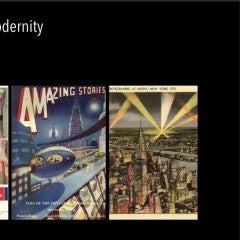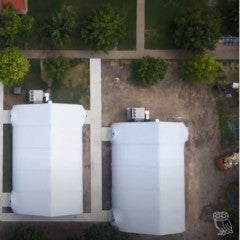Last fall I taught a seminar in Rice University’s FWIS (First-Year Writing Intensive Seminar) program titled “Ecology, Spirituality, and Climate Change.” The course was designed to introduce students to religious studies and environmental humanities while they honed their academic writing and communication skills. Along the way, they read material from religious studies, the ecological and biological sciences, philosophy, and popular culture to better understand the ways in which religious and ecological ideas overlap.
Inspired in part by the musical scores of Pauline Oliveros, I designed a first writing assignment to introduce students to the themes of the course while using their sensory experience of their environment as the source material. I called it the “Sense Exercise,” and designed it for two purposes: first, it’s a tool to ease students into environmental thinking in a safe, low-stakes capacity. My students were under exceptional pressures this fall, and I did not want to call them to witness a species extinction event, an oil spill, or any other kind of cataclysm. They just have to feel their surroundings for five minutes.
Second, this exercise served as a very simple writing diagnostic: since I was working with freshmen, my students came in with different educational backgrounds and they required different pedagogical strategies and forms of teacher support in their writing. The sense exercise was a very quick and simple diagnostic tool to assess first-order descriptive and analytical writing abilities, before worrying about formatting a reference section or refining a thesis.
The assignment can be expanded to include an oral communication component (my class ended up doing this), in which students gave a five-minute multimedia presentation of their environment and their personal experience within it. This was a great way to introduce some basic oral communication strategies, skills, and technology, again, in a very simple and low-stakes exercise.
At the end of the semester, as my students reflected on their work in the class, several brought up the sense exercise as a particularly special moment in their experience. A few students told me that they had never had an experience of intentional sensory awareness like the sense exercise. One student remarked that the exercise felt like undergoing Jedi training (I am assuming that’s a good thing). Overall, the students seemed to really enjoy a chance to use their senses and the more subtle forms of body awareness as a tool in their academic work.
This assignment was written for an introductory writing class (mine happened to be focused on religious studies and environmental humanities), but I think this assignment could be easily adapted for any other writing curriculum: an ethnographic exercise, an experiment in phenomenology, or simply a journaling activity. Since the assignment was largely derived from an improvisational music score, this basic approach should be simple to retrofit to different collaborative environments: classrooms, performance, and/or personal experimentation.
I tried to avoid ableist or otherwise discriminatory language in the assignment. Not all of our students will use the same five senses, or have regular access to a serene environment for personal reflection. Hence, the assignment emphasizes body awareness rather than seeing/hearing, and conducting the exercise in an accessible (rather than exceptional) place, like a bedroom. I welcome any feedback or suggestions for how this exercise could be redesigned to be more accessible or otherwise improved.
I have included the prompt below for reference.
Sense Exercise
This is a two-part writing assignment designed to give you a chance to flex your writing abilities while engaging with some of the themes of the class on your own terms.
For this assignment, you must pick an environment and enter it: this environment can be your own room, another room, your backyard, the park down the street, etc. Please do not travel to access an interesting or special environment for this assignment. The most important thing is that this is an environment you can access easily and safely (we’re social distancing here).
Ok, you’ve entered your environment: now spend about five minutes just being in it. How does it feel? Engage any of your senses. How do you feel? Take notes.
Time to write: the first paragraph will consist of description. In about 100-200 words, tell me about your environment. Where were you? Was this a familiar place, like a bedroom, or a new place, like the park down the street? How were your senses engaged? What did it feel like?
Your second paragraph will consist of analysis: In about 100-200 words, analyze your description. Take it apart, see how it works, put it back together: How did your sensory engagement and feelings connect? Or did they not connect? If it was a familiar place, did you notice anything unusual? Did anything change in your environment during the five minutes, or did it stay the same? Was this a relaxing or stressful experience? Is it overwhelming to engage your senses for five minutes? Or is it boring? Was anything surprising? Did you learn anything by just existing somewhere for five minutes?
Timothy Grieve-Carlson is a PhD Candidate in the Department of Religion and an Instructor in the FWIS (First-Year Writing Intensive Seminar) Program at Rice.
Main image: Pauline Oliveros with additional design by Lawton Hall, Wind Horse, 1990, text score.







